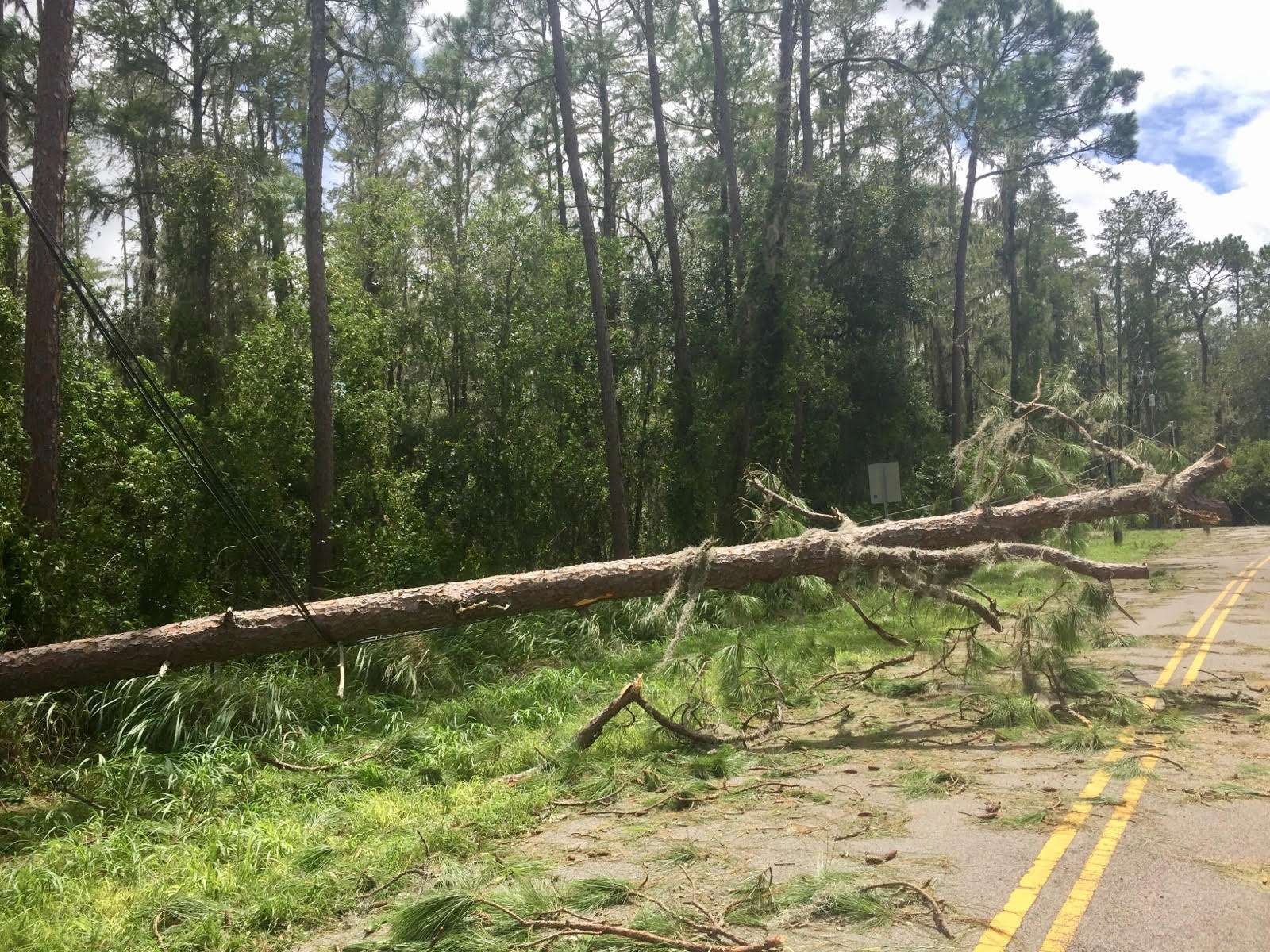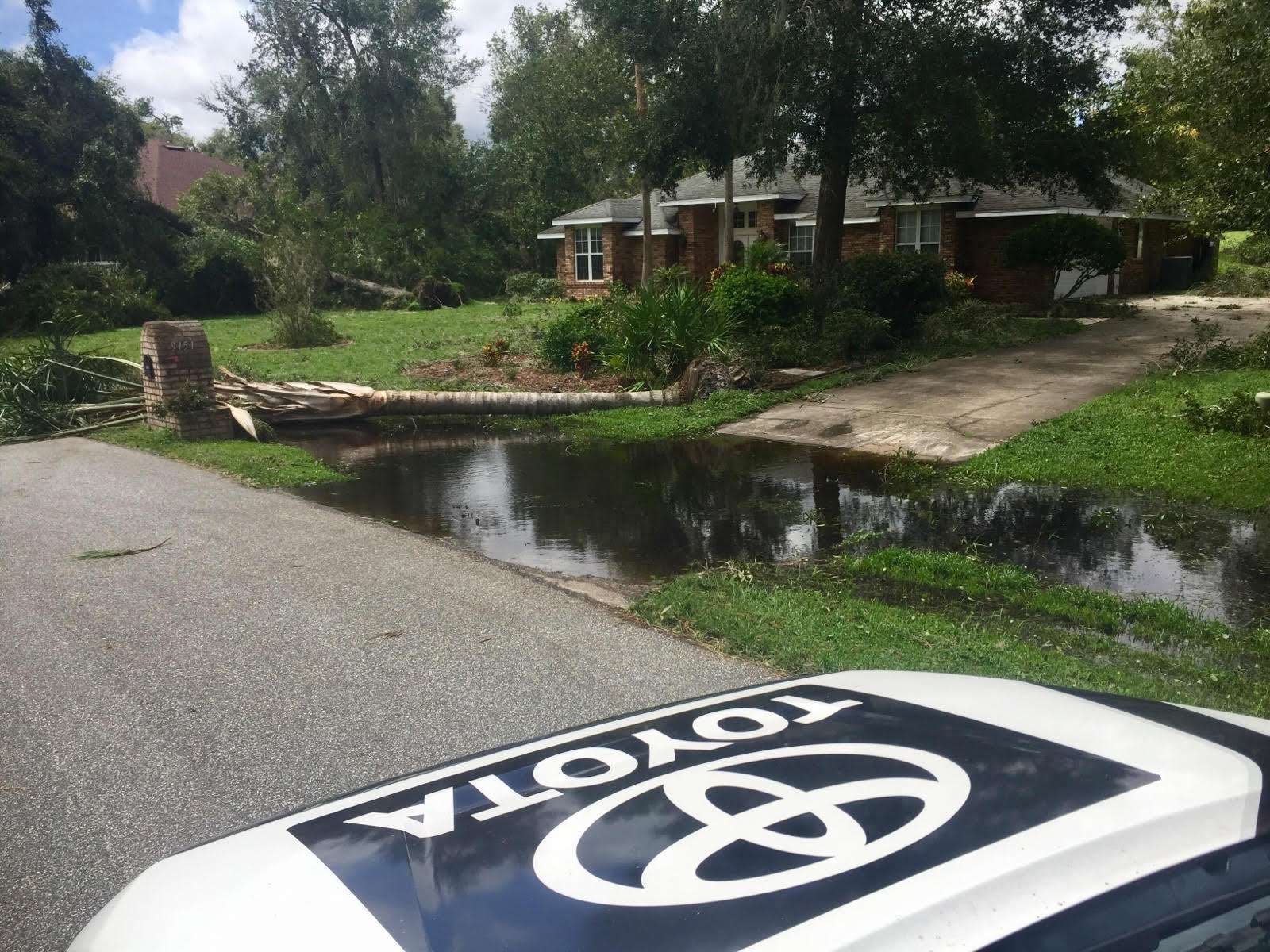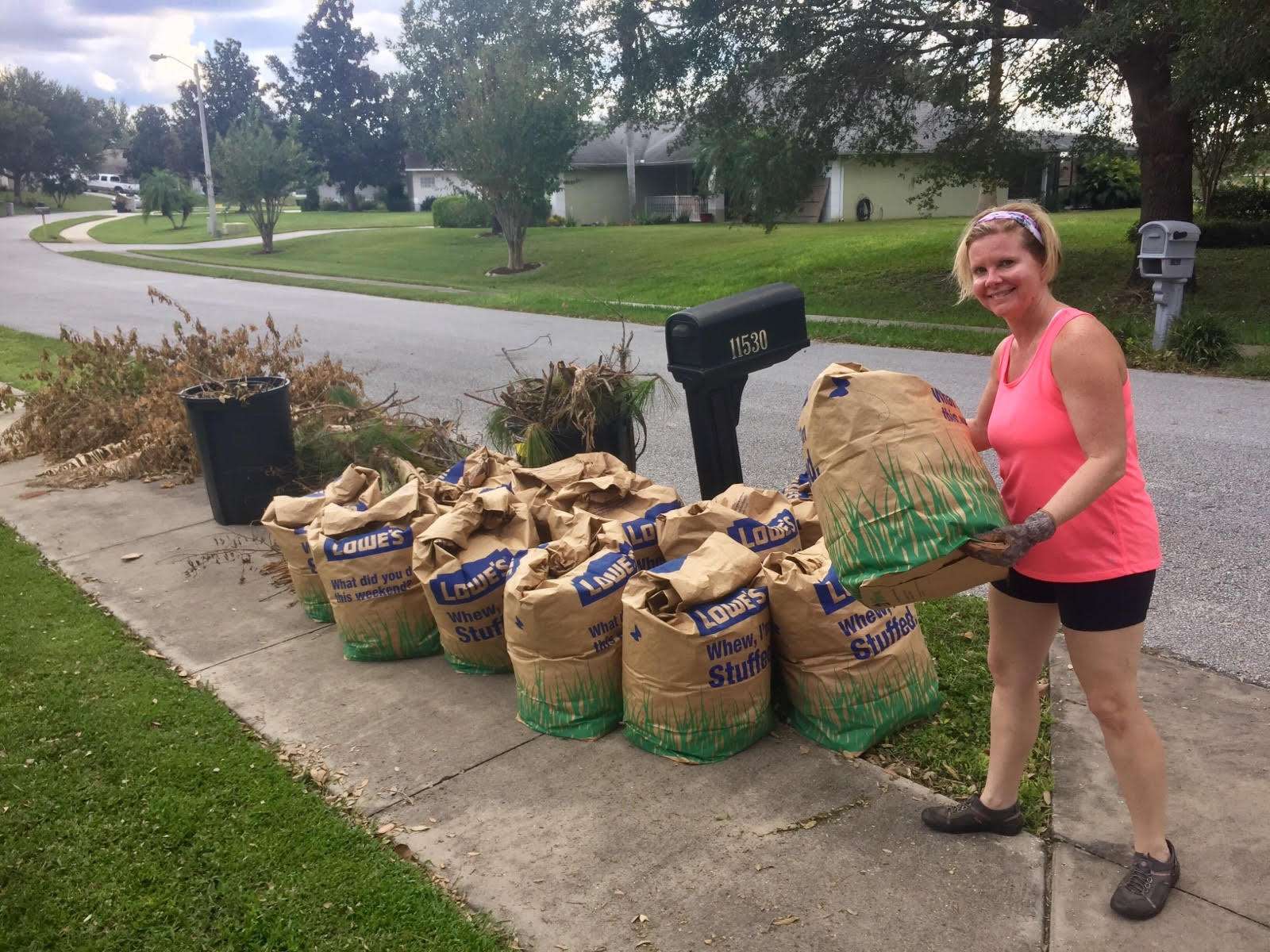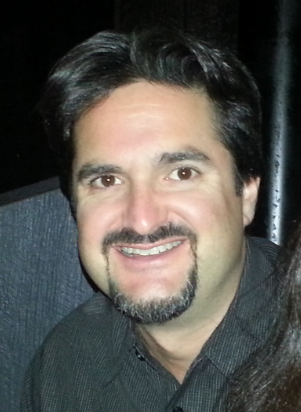
MIAMI, Fla. – Chris Bowes had just wrapped nearly a week’s worth of work at the Bass Pro Shops Northern Open No. 3, but the Bassmaster Opens Tournament Director knew there was no time to rest.
With Hurricane Irma churning toward his home in Clermont, Fla., he had to act fast.
After verifying tournament results, Bowes grabbed several gas cans from the B.A.S.S. trailer and from the tour’s live release boat. He filled them with fuel in Dandridge, Tenn. (site of the Northern Open No. 3) and he began the 660-mile journey southward to Clermont.
This was the early evening of Saturday, Sept. 9 and most of the cars that clogged Florida’s interstates a day before already had dispersed. Those vehicles were filled with millions of Floridians headed in the opposite direction – going north, going west or going northwest; just anywhere but south in the Sunshine State where the enormous Category 4 Irma was within 24 hours of unleashing its fury.
Undeterred by the masses already headed to safety, Bowes pressed on through the night. Nine hours later, and with his vehicle’s gas tank filled with fumes, he rolled into the driveway of his Clermont home. The neighborhood was relatively quiet and the skies eerily calm at 3 a.m., but that serenity would be fleeting.
Within hours, Hurricane Irma began to wreak havoc in Central Florida. As the evening of Sept. 10 turned into the morning of Sept. 11, then Category 2 Irma bore down on Clermont, bringing with her winds of 100 miles per hour that toppled trees, ripped holes in roofs and dropped power lines. Bowes huddled with his wife throughout the howling storm, along with his mother and sister who already fled their homes in Bradenton on the west coast of the state fearing they were in Irma’s direct path.
They were, at one point, due to be near Irma’s landfall on the mainland, but the fickle storm kept meteorologists and Americans in several coastal states guessing for days. There was, however, plenty enough suffering for millions of Floridians to endure. From Florida’s famed keys all the way to the northeast corner of the state where record flooding swamped parts of Jacksonville, Irma left the Sunshine State in tatters.
Now, one week after the largest storm of 2017 tore through Florida, most of the state’s residents are beginning to see their lives return closer to normal, but Irma’s ferocity has slowed the process. Though power has been restored to most customers and flood waters have long since receded, fuel supplies remain strained in some areas. Drivers still don’t have access to U.S. Hwy. 1 to the Florida Keys and tolls aren’t being collected on the state’s roads to ease traffic. Hotels throughout the state still are jammed with people whose homes remain unlivable, even as evacuees stream into airports in Tampa, Orlando, Fort Lauderdale and Miami, returning home by the tens of thousands.
Among those picking up the pieces Hurricane Irma left behind are thousands of B.A.S.S. Nation members, and several Bassmaster Elite Series anglers, who endured a harrowing week thanks to the most unwelcome of guests.
“You never can rest easy in a hurricane, big or small,” Bowes said. “You’re always on your toes because you never know what it’s going to do.”

Hard to read
When Hurricane Harvey began brewing off the Mexican coast in late August, meteorologists immediately predicted it would travel virtually due north and hit the Texas coastline in just a few dozen hours.
The forecasts were right. The Category 4 monster smashed into Rockport, Texas only a couple days after growing from a weak tropical system into a decapacitating storm that produced a 170-mile stretch of widespread flooding practically unrivaled in American history.
Tracking Hurricane Irma was a completely different story. People throughout the southeastern U.S. followed the storm for nearly two weeks – from its birth off the coast of Africa to its slow trek across the Atlantic during which it grew into a massive Category 5 killer. They watched in dismay as Irma wreaked havoc on islands across the Caribbean, and shuddered when she turned on the North American mainland.
Then the storm toyed with millions of wary hurricane watchers.
Would Irma hit the Carolinas? Would she target the east coast of Florida, or would it be the west coast? Or would the storm spare Florida altogether, slip into the Gulf of Mexico and possibly give south Texas a double whammy of tropical weather?
After skirting nearly the entire northern coast of Cuba, Irma turned north and went across Cudjoe Key, Fla. on the afternoon of Sept. 10 as a Category 4 hurricane. The storm made a second American landfall near Marco Island on the west coast of Florida as a strong Category 3 and reached shore for good in Naples with wind gusts up to 140 miles per hour. The storm continued inland and churned northward into the the peninsula which caused it to weaken, but not before crippling the state’s electrical and transportation grids. Even as Irma began to dissipate, the storm caused record flooding in northeast Florida, and its violent weather gave birth to numerous tornadoes that abetted the already imposing storm.
A series of tornado warnings was the last thing Elite Series pro Terry Scroggins saw flash across his television screen right before power went out on Sept. 10.
“There were 54 warnings in effect at one point, and then no power,” Scroggins said. “That definitely had me worried.”
Scroggins said one of the hardest parts of dealing with a hurricane is that you often have a lack of information about what’s happening in your immediate area during the storm. For Scroggins, who lives in San Mateo near the St. Johns River in northeastern Florida, the unknown included widespread flooding, though rising water didn’t affect him (he lives about 25 feet above sea level which is high by Florida standards.) Scroggins did lose numerous trees on his heavily-wooded property and was without power for six days, causing him to flee to his girlfriend’s house about 30 minutes away where they ran a couple appliances and a freezer off generator power.
“I’ve been picking up since the storm hit, and I’ve burned 10 truckloads full of limbs and brush in a week,” Scroggins said. “I’ve been through 15 or 20 of these (hurricanes) now, I guess, and I’ve never evacuated. But still, it’s no fun when you’re sitting there listening to the wind howl all night long and it’s blowing 90 miles an hour. You just know your roof is going to come off at any time.”

Part of it all
Fellow Elite Series angler Shaw Grigsby Jr. lives in Gainesville about an hour due west of San Mateo. He experienced conditions almost identical to what Scroggins saw, though both said they were lucky Irma had died down to a strong Category 1 storm by the time she reached them.
“It blew really good through here, and it was a steady, hard wind for a long time,” Grigsby said. “You always want these things to come in the daytime so you can see what’s happening, but of course, it came at about 5 a.m. (Sept. 11.) I went out outside and it was blowing good and when I went back out at 7, I thought maybe it had calmed down a bit. Then I heard “Whack!” and a tree goes down near the house a few dozen yards away. I went running back inside in a hurry. That gets your attention.”
That falling laurel oak missed Grigsby’s house, but his son wasn’t so lucky that day. Another giant oak tore through the side of the younger Grigsby’s Gainesville home and he’s been staying with his dad ever since.
Knowing what hurricane recovery entails, the veteran angler bought a generator not long after a trio of storms (Charley, Frances, Ivan) wreaked havoc on Florida during the summer of 2004.
“We were without power for six days back then and this time it was four days,” Grigsby said. “Gas is still hard to find now, and when we went to the McDonald’s yesterday for breakfast, they only had a limited menu…That wasn’t a big deal, but we ran out of fuel for the generator and went a day without electricity, without gas, everything. The power finally came back on which gets you feeling much closer to normal.”
Another oak tree growing right beside Grigsby’s home luckily withstood Hurricane Irma, but several arborists have warned him to have it taken down before it can damage his house in a storm. Grigsby, ever the outdoorsman, said he’ll take it down himself rather than pay to have it removed.
“I’ll get my deer stuff out in a couple days and climb up and start lopping limbs and then start taking it down piece by piece,” he said.
Grigsby doesn’t mind the work, especially with the typically pleasant weather (not to mention the superb bass fishing) the Sunshine State offers.
“Dealing with hurricanes is part of living down here,” he said. “You move to California and you have earthquakes. You’re in Oklahoma, northern Alabama…you’re in Tornado Alley. If you live on Miami Beach or by the water, you know when something like Irma is coming, you have to leave. It doesn’t make it easier, but it’s what you do.”
That is, except, if you are Bernie Schultz’s wife. The Elite Series pro’s spouse has been living temporarily in West Palm Beach settling her late mother’s estate, and she decided to stay in the area even when Irma was skirting just south of the mainland on a path to the Florida Keys.
Schultz, who lives near Grigsby in Gainesville, said the key to handling an emergency situation is to remain calm.
“My wife and I talked on the phone throughout most of the storm,” he said. “I stayed up here in Gainesville and we lost four trees. I don’t have a generator, but I didn’t panic. My main thing is having provisions – food, drinking water, fuel, candles.”
To be on the safe side, Schultz stored his bass boat in a friend’s warehouse, and he wedged a light saltwater skiff he owns into the leeward side of his own home so it wouldn’t catch air in Irma’s bluster.
“I was born and raised right here; my wife too,” Schultz said. “I used to live on the coast. I didn’t evacuate then, and I don’t now. But I’m glad to see this one over.”
So too is Bowes, whose house 90 miles to the south of Gainesville suffered minor roof damage during Irma. The wind and driving rain also were intense enough to cause water to seep through a stucco wall of the house and soak carpeting in Bowes’ office.
Minor inconveniences, he said, compared to what befell millions of others during Hurricane Harvey and even to people in his own neighborhood when Irma came calling.
“My heart goes out to those people who really did suffer all that flooding in Texas and in southwest Louisiana during Harvey,” he said. “And here, there were so many more people who got hit a lot worse than I did. I got lucky.”

